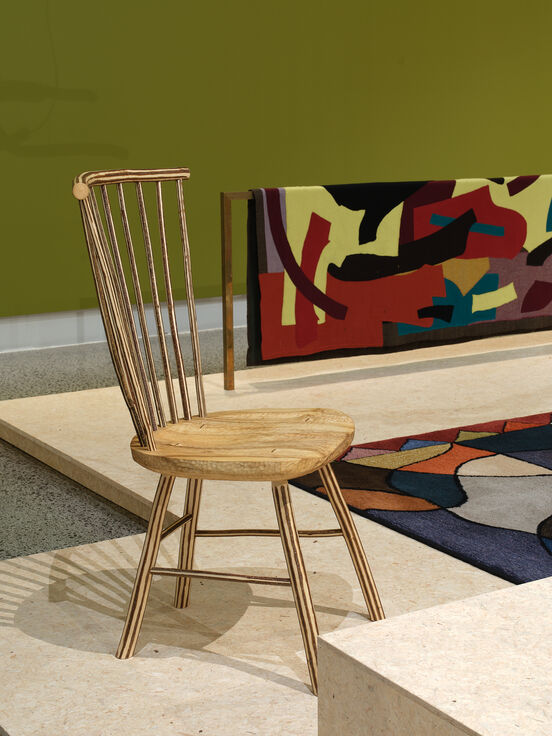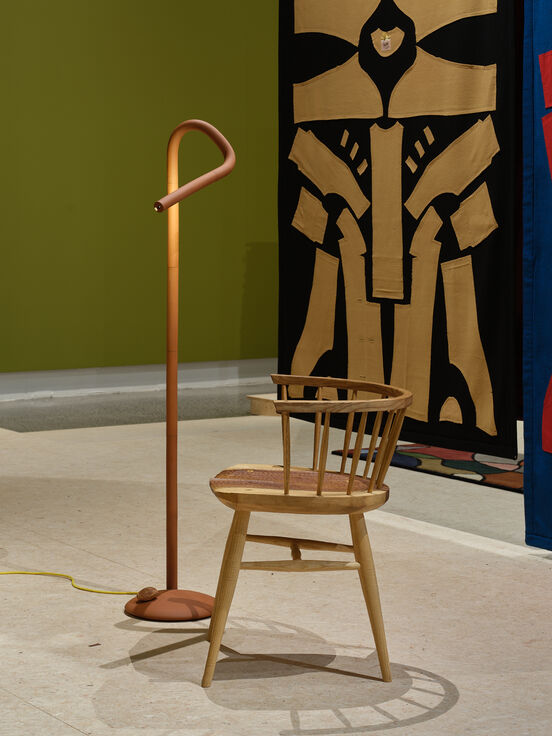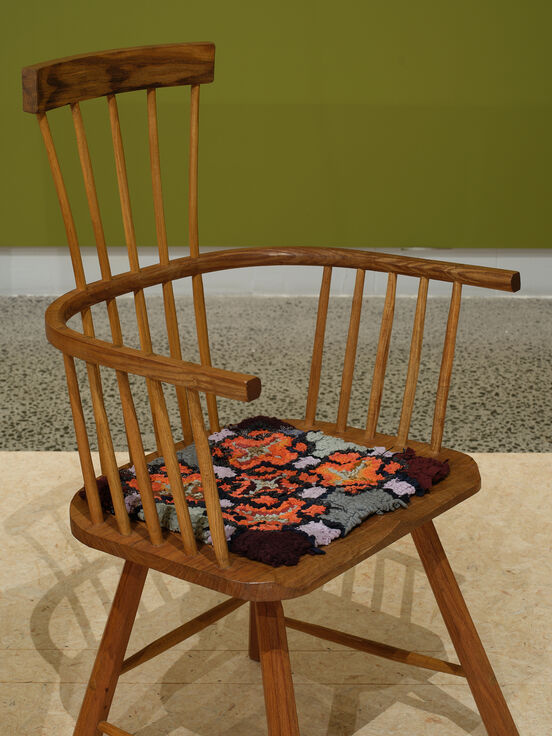How to make a home with… Greg Quinn
Greg Quinn is one of 14 artists, makers and designers exhibiting in How to make a home, a show exploring the small universe of home and the material politics of the objects and adornment we live with over time. We asked Greg four quick questions about their work in the exhibition and what makes a home, read his responses below.
—
Objectspace: Can you briefly describe the material and making of your works in How to make a home?
Greg Quinn: The materials I work with are local timbers, either harvested by me or sourced from local arborists and landowners. I’m able to look at a piece of work and say where the trees that went into the piece grew, which to me is very important. Aside from having a portion of the wood milled, all work is undertaken using hand tools, often starting with an axe. Surfaces are finished using blade tools: gouge, drawknife, spokeshave, plane, scraper. Mortices are bored using brace and bit. Turnery is done using a pole lathe. There are always unexpected features in the wood to which hand tools allow me to respond.
OS: Can you share some of your thinking behind the works?
GQ: These chairs use the greenwood tradition of furniture making, all three are ‘slab and stick’ in construction. They were built to endure daily use, made simply from local material that would otherwise become firewod or mulch via the arborist’s chipper.
The Welsh Stick Chair is inspired by John Brown’s (1932-2008) documentation of early chairs in this style which were often made by the end users. Often more decorative, the Windsor chairs are purposefully simple forms of that.
All three chairs use techniques that are suggested by the qualities of the wood; the hazel sticks are naturally ready to become spindles and legs, and the Low Windsor has turned legs, spindles and stretchers because Ash responds well to that, whilst the Oak legs of the Welsh Stick Chair were dry and therefore unsuited to pole-lathe turning so were planed. These timbers and technologies impose their efficiencies on the outcome and so each chair’s attributes unfold in the making process.
OS: How do you feel your work connects to domestic spaces and/or the way we adorn and dress them?
GQ: My work demonstrates a direct relationship between what is locally available to make with and its capacity to enter the home and reliably serve a domestic purpose. In an era of mass-produced adornments of mysterious origin and maker, my work relies on the closest possible relationship between the tree, me, and the finished pieces.
My work prioritises the simplicity of old hand tools over speedier, noisier processes, and in doing so communicates the work it takes to respond to the timber through the marks of the drawknife, travisher, gouge or lathe. In this way the maker is present in the home. This responsive process does not lend itself to making objects uniform, matching, polished or smooth. These objects become truly polished only through years of use, as they become part of the lives lived within the home.
OS: How to make a home posits that what makes a home is the persistence of ‘things’ that inspire us to feel like we belong. Can you tell us about an object that has made, or does make, your home a home?
GQ: On the wall of our kitchen hangs an oval bent hazel fruit rack, held together with oak nails, and hung with rope woven from tī kōuka leaves. It was made by my wife Juliet, and it’s one of the first things seen when entering the house. It’s a constant welcome sight, but also ever changing; as the seasons change it’ll carry what comes inside from the garden, or from elsewhere – apples, pears, avocados, lemons, cucumbers, tomatos, grapefruit, onions, tamarillos – it’s always there, yet always different. It would be difficult to imagine our home without it.
—
More about Greg Quinn
Greg Quinn works with wood, both as a professional in home-orchard care and in furniture making. His creative practice focuses on making beautifully conceived and executed greenwood furniture, rakes, pegs, food storage crates, brooms and other objects of use, using traditional machine-free techniques. In recent years Quinn has taught stool-making workshops through Rekindle, a programme of craft workshops that teach people resourceful skills using locally foraged and harvested materials. Quinn is based in Waikirikiri Selwyn and works across Waitaha Canterbury.



Greg Quinn, Welsh Stick Chair, 2021, Low-backed Windsor Chair, 2020 and Windsor Chair, 2024 within How to make a home, 14 Sep–17 Nov 2024 at Objectspace, photographs by Sam Hartnett